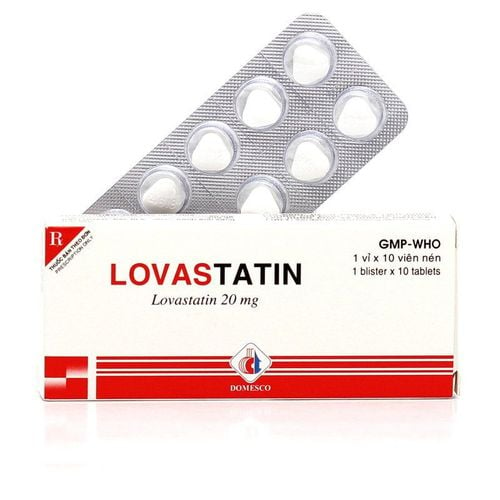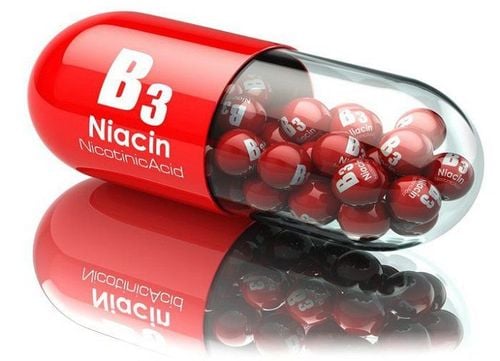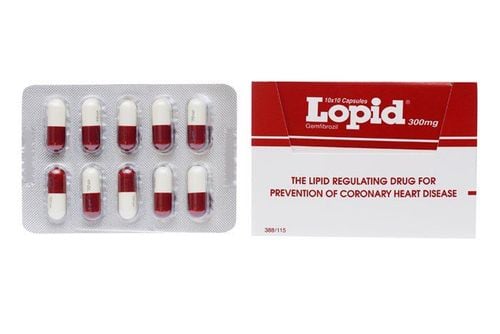This is an automatically translated article.
Snails are found everywhere and while most gardeners don't like them, some consider snails a delicacy. Although annoying for many people, snails are still consumed all over the world and are a very healthy food. The following article will help you better understand whether eating snails is good for health or not.
1.Snail Facts Scientific name Gastropoda
Common/English name Gastropod, gastropod, slug, snail
Key nutrients:
Magnesium, Mg 212 mg (50.48%) Manganese, Mn 23.3 mg (1013.04%) Copper, Cu 0.34 mg (37.78%) Iron, Fe 2.98 mg (37.25%) Phosphorus, P 231 mg (33.00%) ) Vitamin E (alpha-tocopherol) 4.25 mg (28.33%) Protein 13.69 g (27.38%) Vitamin B12 (Cobalamin) 0.42 μg (17.50%) Choline 55.2 mg (10.04%) Vitamin B6 (Pyridoxine) 0.111 mg (8.54%) Health Benefits:
Snails are the largest subgroup of Krill with 10,000 species and 400 living families. Globally, snails are distributed everywhere, in water and on land. Most aquatic and marine animals are benthic, of which a few are swimmers. Some species of snail have an entire inner shell and are covered with skin. Groups that lack shell protection such as nudibranchs are elaborately colored to help them blend in with similar background colors and warn predators of a noxious taste.
Snails have real hairs, the body is divided into three parts including head, leg muscles and organ mass and organ systems for respiration, circulation, excretion, digestion, reproduction and nerve transmission. Its body plan twists or twists during larval development by twisting the visceral mass 180 degrees relative to the head and bringing the animal's mantle forward. The orifice of the kidney, anus, and gills are located near the front of the animal. Most snails are herbivores in the wild, but many marine species and few terrestrial species can be carnivores or omnivores. Snails use their radula gas to break down food. The radula is a chitinous structure containing microscopic hooks known as cuticula. Snails eat this food and then pass it on to the digestive tract.
Snails have 1-2 pairs of tentacles on their heads. In land snails, the eyes are carried on top of the first set of tentacles and are 75% of the width of the eye. The second set of tentacles act as olfactory organs. Land snails have tentacles. Snails have ganglia, which form a primitive type of brain that is divided into four parts. This structure is simple compared to the brains of mammals, birds, and reptiles. Snails have associative learning.
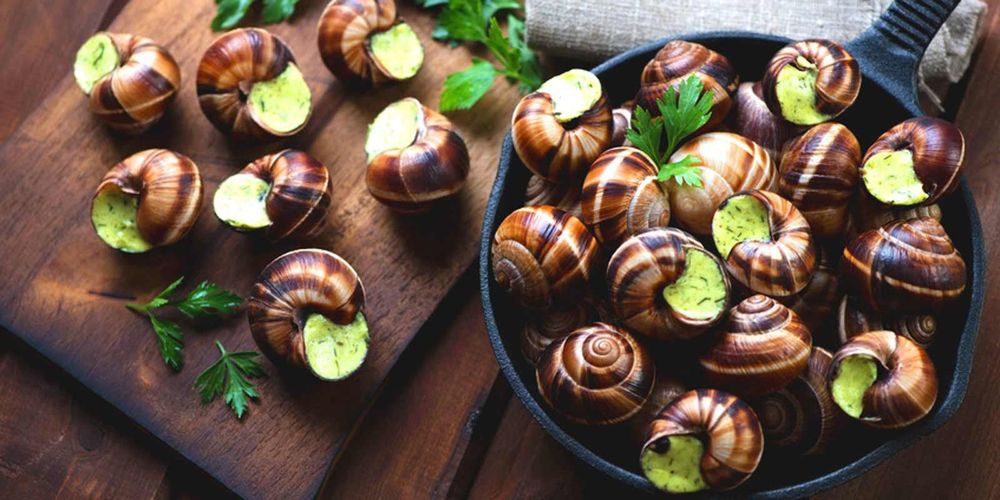
Ốc sên có chứa nhiều chất dinh dưỡng tốt cho sức khỏe người sử dụng
They move by alternating body contractions by stretching at a low rate of 1 millimeter per second. They produce slime to aid movement by reducing friction. Mucus also reduces the risk of snail injury. They have a coat that covers internal organs called feet.
Snail meat is considered a high-quality protein rich food and is also an excellent source of iron. It contains 15% protein, 80% water and 2.4% fat, making it a food alternative for those requiring a low-fat, low-protein diet. Snails are rich in essential fatty acids such as linoleic acid and linoleic acid.
Diet
In the wild, snails consume a variety of foods such as fruit, leafy vegetation, carcasses and feces. They create damage to agricultural crops.
Life cycle
Some species lay eggs containing multiple yolk sacs. The development of the egg can be inside the body or it can be outside to develop. The eggs develop into larvae and those larvae develop a shell, which then has an opening from which the animal's legs or head emerges.
Reproduction
Snails are sexual and some species are hermaphrodites meaning a single individual can produce both eggs and sperm. Individuals exchange sperm with other individuals instead of self-fertilizing.
2. Health Benefits of Eating Snails 2.1 Protein Content Snails provide a low-calorie protein source needed by muscles. It helps the body feel full better than fats and carbs.
2.2 Presence of Iron Snails are an excellent source of iron, which is needed to build red blood cells and transport energy throughout the body. An iron deficiency leads to anemia and extreme fatigue. Iron is a component of the heme groups of oxygen-carrying proteins such as myoglobin and hemoglobin and the electron carrying cytochrome proteins of the mitochondria. Iron has an important role in oxidation or reduction along with processes such as oxygen transport or cellular respiration. Iron-sulfur enzymes act as mitochondrial electron transfer reactions. Iron is available in the intracellular cytochrome enzyme system with an important role in energy production as well as cellular respiration. Literally, iron from animal sources can be absorbed more than from vegetables and grains because iron from plant sources forms complexes with oxalates and phytates in plants. It is an excellent source of dietary iron.
2.3 Vitamin B12 Vitamin B12 is needed for the production of red blood cells, keeping the nervous system healthy and releasing energy from the foods we eat and processing folic acid. Snails contain a lot of vitamin B12.
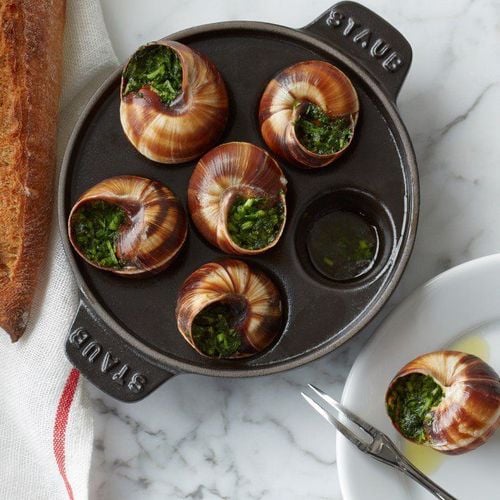
Ốc sên chứa nhiều vitamin B12 cần thiết cho hệ thần kinh khỏe mạnh
2.4 Magnesium Snail is an excellent source of magnesium, which the body needs to maintain normal blood pressure, regular heart rate and strong bones.
2.5 Presence of Selenium Selenium found in the body helps keep the immune system healthy and protects cells from damage. Snails have selenium in them.
2.6 Energy supply Crude protein content was determined using a Soxhlet extraction apparatus to thoroughly extract crude fat from 4 ground snail samples using petroleum ether in the soxhlet fat determination method. . The extracted fat content weight was divided by the sample mass multiplied by 100% to obtain the percentage crude fat content. Ash is determined to be burned 5g snail samples that have been milled at 550 degrees Celsius overnight in a furnace. Weights after and before ashing were used to calculate the percentage of ash content. Dry the 2 g of the milled snail sample at 105 °C for 3 h using a temperature controlled forced-air oven with determined humidity. Weight difference after and before drying is used to calculate the moisture percentage. The total amount of carbohydrates obtained is 100% by subtracting the percentage of crude fat, crude protein, ash and moisture. The energy value of the snail sample was obtained by multiplying the percentage composition of fat, protein and carbohydrates.
2.7 Copper Copper is part of the tyrosinase enzyme, which is necessary for the formation of the pigment melanin in the body. It is part of the lysyl oxidase molecule and other enzyme systems. Copper has an important role in promoting the normal function of the connective tissues of the bones. Snail meat is a great source of copper and is used to combat bone deformation. It stimulates the use, absorption and synthesis of iron into cytochrome and hemoglobin molecules.
2.8 Zinc Over 80 enzymes such as carbonic anhydrase, alcohol dehydrogenase, RNA and DNA polymerase and carboxypeptidase are considered to require zinc. Zinc concentrations are high in sperm cells, prostate and eyes, where it is considered to play an important role in the function and function of all body tissues. Zinc, along with vitamin A, plays a role in night vision and adaptation to darkness. People consume snail meat to cure eye diseases.
2.9 Calcium About ninety-nine percent of calcium is found in teeth and bones and one percent is found in body fluids and soft tissues. Calcium is found in abundance in A. achatina. Calcium is needed for normal blood clotting. Snail meat juice is used to stop bleeding from cuts. Lower blood calcium levels promote irritated nerve tissue, and low calcium levels cause seizures. Calcium relieves nervous discomfort.
Snails are an excellent source of calcium orthophosphate, a chemical substrate used to cure kidney diseases. A serving of 200 grams of dried snails in the diet provides the daily calcium requirements for lactating women, pregnant women and adolescents.
2.10 Source of Potassium Potassium is an important intracellular activity and together with sodium it plays an essential role in regulating water and acid radicals & electrolyte balance in the body. Essentially, potassium is needed to lower diastolic and systolic blood pressure in people with high and normal blood pressure. Potassium reduces salt sensitivity, an independent risk factor for heart disease. It affects the contractility of skeletal and cardiac muscles and affects the excitability of nerve tissue. Potassium deficiency leads to muscle weakness, mental disorientation, increased nerve excitability, and irregular heartbeat.
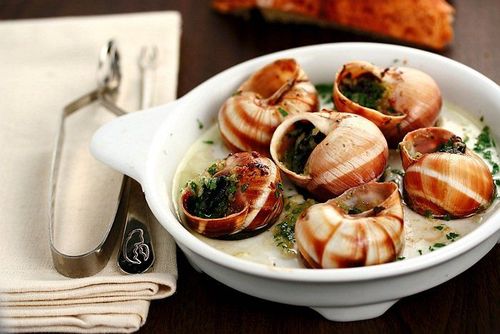
Nguồn kali dồi dào cũng được tìm thấy trong ốc sên
3. Reasons you should eat snails - the newest superfood for health Thanks to their rich protein, iron and Omega-3 content, snails are being considered as the new superfood.
In the Middle Ages, snails were said to cure everything from the common cough to tuberculosis. Today, snails are enjoyed more as a delicious appetizer than for any other reason. However, there are still some health benefits associated with eating snails.
Improve anemia
Iron deficiency anemia can cause symptoms including fatigue, weakness, pale skin, chest pain, headache, dizziness and shortness of breath. Fortunately, eating snails can help relieve some of these symptoms by treating the underlying cause. Snails are an excellent source of iron, with one serving of snails containing 22% of your daily recommended iron intake.
Improves Heart Health
Fish is often noted for its Omega-3 fatty acids, but snails are also a good source.
Omega-3s have been shown to improve heart health and reduce the risk of dying from heart disease. They can also help lower blood pressure, reduce blood clotting, and keep your heart rate steady.
Potential danger of snails
One of the biggest risks when eating snails does not come from the snail itself, but from the way you prepare it. One of the biggest benefits of snails is that they're a low-fat source of protein, but cooking them in a butter sauce puts that fat back up. Some fat is stored in the arteries. These thin tubes carry oxygen-rich blood throughout your body. Over time, they can become clogged if too much fat or other substances accumulate. Clogged arteries can lead to a heart attack or stroke. Therefore, eating high-fat sauce along with snails increases the risk of heart disease or other health problems later in life.
Eating raw snails can, in rare cases, lead to a disease called rat lungworm disease. Rat lungworm is a parasite that can enter snails if they come in contact with rat droppings (faeces). If you ingest a raw snail that has this parasite, you can become infected. Signs of infection include:
Headache Hardness Fever Nausea Vomiting Fortunately, this infection can be prevented as long as you cook your snails thoroughly before eating.
Please dial HOTLINE for more information or register for an appointment HERE. Download MyVinmec app to make appointments faster and to manage your bookings easily.
Reference source: webmd.com; healthbenefitstimes.com




